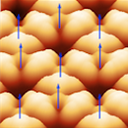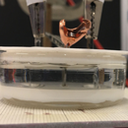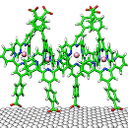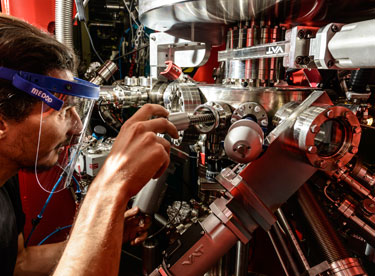
An international research team led by scientists from INMA and CFM in collaboration with the BOREAS beamline of ALBA achieve two-dimensional ferromagnetism on a metal-organic framework for the first time, a result that has been sought for the last two decades. This metal-organic network exhibits huge perpendicular magnetic anisotropy, large remanence at finite temperatures and a much larger coercive field than any other reported two-dimensional system, prone to be implemented as the thinnest magnet ever observed so far.

Researchers at the UAB and ICMAB-CSIC have succeeded in bringing wireless technology to the fundamental level of magnetic devices. The emergence and control of magnetic properties in cobalt nitride layers (initially non-magnetic) by voltage, without connecting the sample to electrical wiring represents a paradigm shift that can facilitate the creation of magnetic nanorobots for biomedicine and computing systems where basic information management processes do not require wiring. Part of the experiments were performed at BOREAS beamline of the ALBA Synchrotron.

CNR, University of Florence and ICMol researchers in collaboration with the ALBA Synchrotron (BOREAS beamline) demonstrated that a spin-crossover (SCO) phenomenon can be observed in a monolayer of Cobalt (II) complexes anchored from solution to a metallic substrate. This strategy paves the way to the realization of smart SCO nanodevices through soft methodologies with prospective applications in spintronics.

A team of international researchers from Spain (ICMAB, EUSS, ICN2, INMA, ICMM, ALBA) and UK (University of Southampton) have discovered a method to synthesize carborane-based Metal Organic Frameworks (MOFs) incorporating any desired combination of multiple rare earth ions. The optical, thermal and magnetic properties of a proof-of-concept multi-metallic MOF including 8 different rare earth ions have been reported. Element-selective XAS & XMCD spectroscopy at BOREAS beamline of ALBA was used to characterize the individual magnetic properties of the 8 ions. This innovative approach allows for multifunctionality à la carte, and this newly discovered multi-metallic MOFs could have potential applications in fields such as quantum computing, luminescence, anticounterfeiting and thermometry.

A study published in Advanced Functional Materials and led by researchers in the United Kingdom, in collaboration with BOREAS beamline at the ALBA Synchrotron, has proved the possibility to store magnetic information in picosecond timescales at a fullerene - oxide interface by using the photocurrent generated in the molecular layer. This holds great potential for the development of eco-friendly, ultra-fast hybrid information memories and magneto-optic sensors working via light or electrical irradiation at high frequencies.






